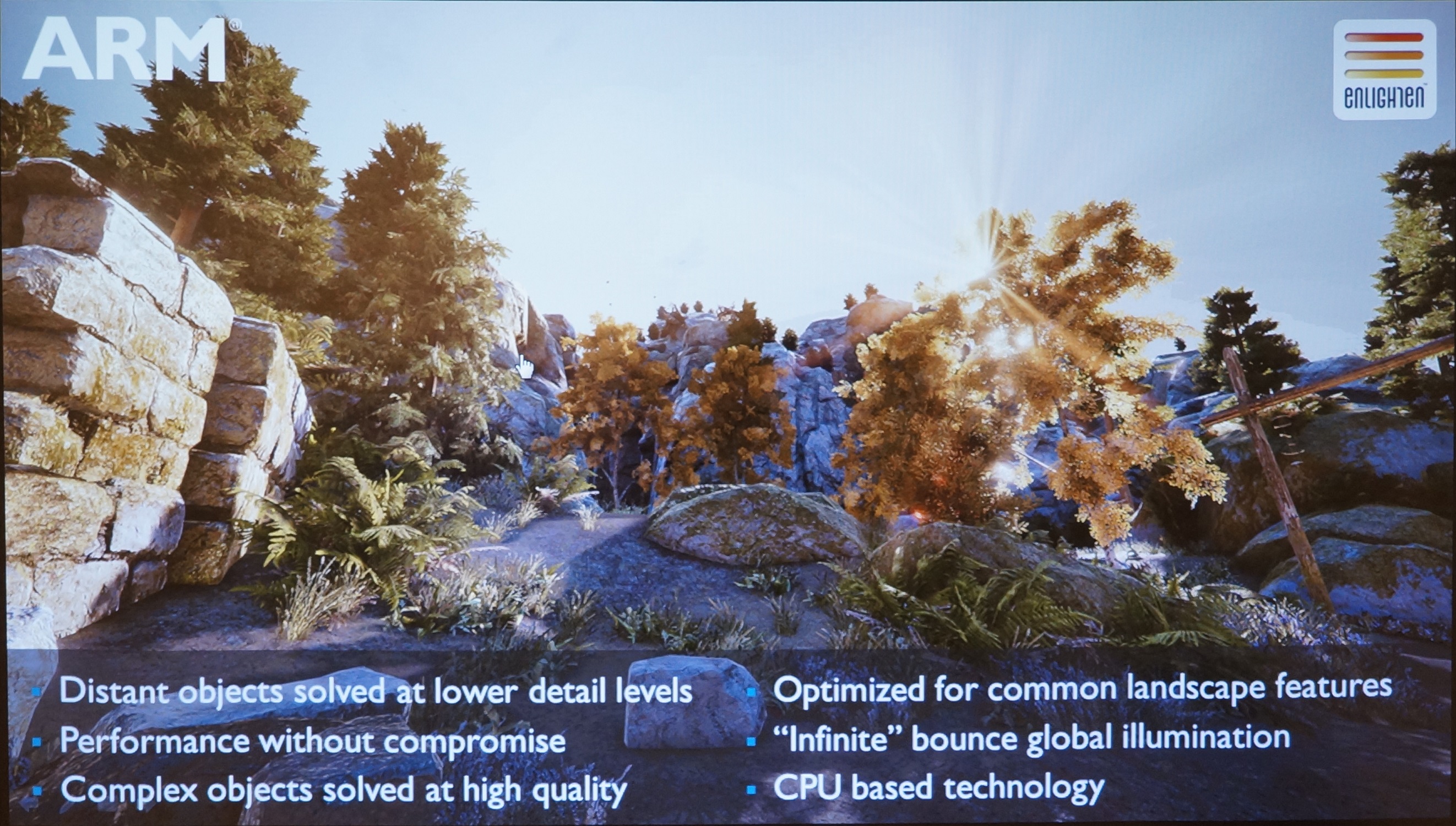Enlighten Makes In-Game Lighting More Realistic
The latest version of Enlighten from ARM can process light from a multitude of sources and render it in real-time, improving game visuals.
SAN FRANCISCO — Unless you're a video game programmer, lighting may not be your chief concern, save for when you see something exceptionally beautiful or too dark to perceive. But, lighting can make a huge difference, whether you're exploring a dystopian sci-fi future or walking along a sunny beach, and it's generally both expensive and time-consuming to produce. The latest version of Enlighten from ARM can process light from a multitude of sources and render it in real-time, making for more beautiful games with potentially shorter development times.
I got a firsthand look at the new Enlighten engine (version 3.04) at the Game Developers' Conference 2016. To simplify matters considerably, Enlighten produces realistic lighting conditions by making light bounce off of different surfaces in a realistic fashion. As such, it can not only handle multiple light sources, but make ample use of distant ones to illuminate entire areas, rather than relying on artificial lights.
MORE: Most Anticipated Games
For example: ARM showed us a demo that took place on a rocky beach, both during the day and at night. At one point, ARM's robotic avatar entered a cave lit only by its flashlight and a distant ray of sunshine penetrating the roof. With Enlighten activated, we could see the flashlight's beam bouncing off the walls and the sunshine producing faint illumination on the rocks, just as they would in real life. When we asked the representatives to turn Enlighten off, the results looked much more like a typical video game: a circular flashlight beam surrounded by total darkness, and a ray of sunshine that didn't seem to produce any ambient light.

Another potential advantage of Enlighten is that it could shorten the programming time for lighting effects. Traditionally, game developers have to program lights, then render them, tweak them, and render them again until they're perfect (or at least good enough to ship). Because Enlighten is a procedural process, developers can preview effects in real-time and tweak them on the fly.
A system this ambitious does, of course, come with some limitations. At present, Enlighten can only support up to 30 frames per second — which is fine for PlayStation 4 (one of its potential systems), but a bit less than what PC gamers are used to. In technical terms, Enlighten relies on a system's CPU to handle the lighting, leaving its GPU to handle discrete graphics. This can be quite taxing on a CPU, however, especially since the CPU also handles tasks related to gameplay.
Ninja Theory's latest game, Hellblade, will use Enlighten technology, and earlier versions of the engine are already at play in titles like Star Wars Battlefront and Street Fighter V.
While in-game lighting may not be an immediate concern for most gamers, it can mean the difference between a game that looks good, and one that looks great. As graphics near photorealistic quality and begin the foray into virtual reality, "good" may no longer be good enough.
Sign up to get the BEST of Tom's Guide direct to your inbox.
Get instant access to breaking news, the hottest reviews, great deals and helpful tips.
Marshall Honorof is a senior editor for Tom's Guide, overseeing the site's coverage of gaming hardware and software. He comes from a science writing background, having studied paleomammalogy, biological anthropology, and the history of science and technology. After hours, you can find him practicing taekwondo or doing deep dives on classic sci-fi.
-
Chris_198 The statement about Enlighten only operating at 30 fps is incorrect. Enlighten operates independently of the render thread so is not frame rate limited - this means it can easily support VR frame rates of 120fps or above. If you can render a scene you can light it with enlighten.Reply

